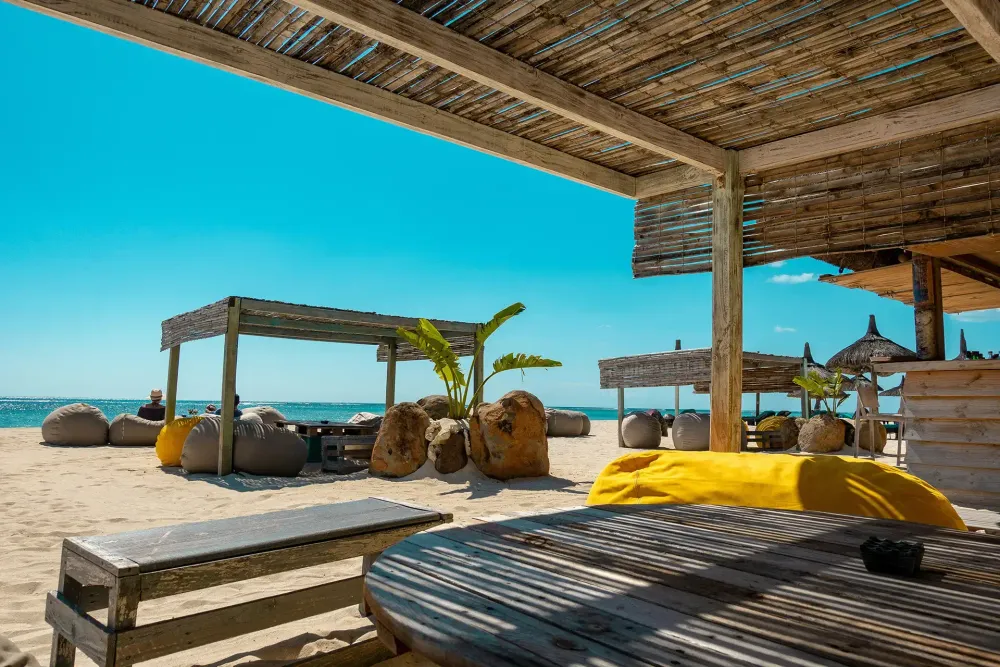Table of Contents
Discovering Port Louis: The Vibrant Capital of Mauritius
Port Louis, the vibrant capital of Mauritius, lies on the island’s north‑west coast where a natural harbour meets rolling hills. As both the economic and cultural heart of the country, Port Louis is a city of contrasts: bustling markets rub shoulders with colonial monuments, street‑food stalls share sidewalks with contemporary cafés, and traditional Creole houses stand alongside modern high‑rises. Whether you’re drawn by history, cuisine, shopping or simply the chance to observe daily life on a dynamic Indian Ocean island, Port Louis offers a richly textured urban adventure.
Why Visit Port Louis?
A Melting Pot of Cultures
Mauritius has welcomed settlers, traders and labourers from Europe, Africa, India and China over centuries, and Port Louis reflects that tapestry. Hindu temples, Muslim mosques, Christian cathedrals and Chinese pagodas all dot the cityscape. Festivals—such as Diwali, Eid, Chinese New Year and Christmas—bring vibrant processions, fireworks and communal feasts, so timing your visit can add a festive dimension to your trip.
Historical Significance
Founded by the French in 1735 and later controlled by the British, Port Louis served as a strategic naval outpost and sugar‑export hub. Its colonial architecture still survives in landmarks like Fort Adelaide (La Citadelle) and stately colonial mansions in the “Waterfront” district. Exploring Port Louis is to walk through layers of Atlantic‑Indian Ocean history—maritime trade, plantation economies and the arrival of indentured labourers.
Top Attractions in Port Louis
Fort Adelaide (La Citadelle)
- History & Architecture: Built in 1840 to defend against a feared French invasion, this hilltop fort combines British military design with Moorish‑style motifs.
- Panoramic Views: From its ramparts you can survey the crescent of the harbour, the distant sugar‑cane plains and the Port Louis skyline.
- Visitor Experience: A short bus ride from the city centre takes you to the base of the hill; a paved path winds up past tropical flora to the fortress courtyard.
Champ de Mars Racecourse
- A Sporting Tradition: Established in 1812, this is the second‑oldest horse‑racing track in the world, beloved by locals and visitors alike.
- Raceday Atmosphere: Races are typically held on Saturdays; book a grandstand ticket or join enthusiastic punters in the enclosures for live music, local snacks and a distinctly Mauritian sporting ritual.
- Insider Tip: Arrive early to savour the colonial‑era clubhouse and mingle with jockeys before the first race.
Le Caudan Waterfront
- Shopping & Dining: A modern complex built around restored warehouses, it houses boutiques, duty‑free shops, art galleries and a wide selection of eateries—from seafood grills to international bistros.
- Craft Market: Under covered stalls you’ll find artisans selling hand‑woven textiles, wood carvings and Mauritius’ famous rum-infused chocolates.
- Entertainment: Weekend live music, street performances and occasional outdoor cinema screenings lend a festival feel.
Port Louis Central Market (Bazaar Port Louis)
- Fresh Produce & Spices: Mornings bring a riot of colour: dragon fruit, lychees, chillies and fragrant spices piled high in wooden stalls.
- Souvenirs & Handicrafts: In the market’s rear sections, vendors sell woven baskets, stamped jewelry and miniature dodo figurines.
- Culinary Delights: Sample “dholl puri” (split-pea flatbread), “gateaux piments” (chilli‑fritters) or piping‑hot “boulettes” (steamed dumplings) right at the stall.
Aapravasi Ghat
- UNESCO World Heritage Site: The Aapravasi Ghat is a restored immigration depot bears witness to the arrival of over 500,000 indentured labourers from India between 1849 and 1923.
- Museum & Exhibits: Photographs, personal letters and artefacts trace the journey—from cramped ship quarters to sugar‑cane fields—offering a poignant glimpse into early post‑slavery Mauritius.
- Reflection Space: The solemn courtyard and interpretive panels invite contemplation of the hardships that shaped modern Mauritian society.
Blue Penny Museum
- Philatelic Treasures: Home to the world‑famous “Blue Penny” and “Red Penny” stamps—among the rarest in existence—the museum illuminates the island’s postal history.
- Interactive Displays: Digital microscopes allow close‑up viewing of delicate engravings, while multimedia exhibits explain stamp‑printing techniques of the 19th century.
- Cultural Collections: Beyond stamps, you’ll find artworks, colonial maps and maritime charts that situate Mauritius in global trade networks.
Natural History Museum
- Extinct Fauna: Skeletons and dioramas of the iconic dodo bird captivate visitors, illustrating how human arrival impacted island ecosystems.
- Flora & Geology: Displays on indigenous plants and volcanic origins explain Mauritius’ unique biodiversity and conservation challenges.
- Family‑Friendly: Children’s activity corners and touch‑tables with shells and fossils make it an engaging stop for younger travellers.
Mauritius Photography Museum
- Vintage Equipment: Rows of wooden‑box cameras, glass‑plate negatives and early projectors trace the evolution of photographic technology.
- Historic Imagery: Black‑and‑white prints depict colonial Port Louis, sugar‑plantation life and early beach resorts, offering a time‑capsule journey through Mauritian society.
- Personal Stories: Family‑run, the museum’s founders share anecdotes about collecting items from defunct photography studios across the island.
Hidden Gems and Local Experiences
Tannery Street and Street Art
- Urban Canvas: Murals by local and international artists transform drab walls into vibrant tributes to Mauritian wildlife, folklore and daily life.
- Guided Walking Tours: Join a local guide to discover back‑street alleys where colourful murals conceal cafés and craft workshops.
Chinatown and Cultural Tours
- Historic Quarter: Located near the Central Market, Chinatown boasts red‑lanterned streets, herbal‑medicine shops and traditional bakeries.
- Dim Sum & Tea Shops: Sample steamed buns and floral teas at century‑old establishments that have preserved Chinese‑Mauritian culinary traditions.
Best Street Food in Port Louis
- Roti & Dholl Puri Stands: Early‑morning vendors roll out “farata” (flatbread) and Dholl Puri stuffed with curried chickpeas, served with chutney and pickles.
- Fruit‑Juice & Milkshake Bars: Cool off with fresh sugar‑cane juice or tropical blends—pineapple, passion fruit and guava—pressed to order. Look for “alouda” (a sweet, milky jelly dessert) topped with basil seeds and ice, a local favourite on steaming afternoons.
Where to Stay in Port Louis
Luxury Hotels
- Labourdonnais Waterfront Hotel: Overlooking the harbour, this five‑star property offers spacious suites, fine‑dining restaurants and a spa with Mauritian massage treatments.
- Le Suffren Hotel & Marina: A hotel offering modern rooms and suites, some with marina views. It features a restaurant, bar, spa, and is described as having a romantic, cozy, casual, and upscale atmosphere.
Practical Tips for Visiting Port Louis
Best Time to Visit
- Peak Season: May to November offers cooler temperatures (20–25 °C), lower humidity and calm seas—ideal for walking tours, waterfront dining and outdoor excursions.
- Off‑Peak Season: December to April sees occasional tropical showers but rewards visitors with lush vegetation, fuller waterfalls and fewer crowds.
Getting Around
- Bus Network: Public buses run frequently along main arteries; single‑journey fares are very economical. Be prepared for standing‑room‑only at rush hour.
- Taxis & Ride‑Hailing: Metered taxis and app‑based services provide door‑to‑door convenience. Agree on rates for longer trips or request the meter.
- Walking: Central Port Louis is compact enough to explore on foot. Wear comfortable shoes and carry water—sidewalks can be uneven.
Safety and Responsible Tourism
- Pickpocket Awareness: As in any busy city, keep valuables secure and remain vigilant in crowded markets.
- Respect Local Customs: Dress modestly when entering religious sites and remove shoes before entering temples and mosques.
- Environmental Care: Do not litter; support vendors who use minimal packaging and refuse single‑use plastics when possible.
Sample One‑Day Itinerary in Port Louis
- 08:00 AM – Central Market Breakfast
Start with a plate of dholl puri and a glass of fresh orange juice amid the morning bustle. - 09:30 AM – Fort Adelaide
Climb to La Citadelle for 360° views of the harbour and city streets. - 11:00 AM – Aapravasi Ghat
Tour the immigration depot and museum for an emotional glimpse into indentured‑labour history. - 12:30 PM – Lunch at Le Caudan Waterfront
Savour fresh seafood curry or grilled fish at a waterfront restaurant. - 02:00 PM – Blue Penny Museum & Photography Museum
Immerse yourself in philatelic rarities and vintage photography collections. - 03:30 PM – Port Louis Central Market (Craft Section)
Browse souvenirs and sample gateaux piments. - 05:00 PM – Stroll Through Chinatown
Sip tea at an old‑world teahouse and admire lantern‑lit alleyways. - 06:30 PM – Sunset Drinks at a Rooftop Bar
Choose a city‑centre hotel terrace for cocktails as dusk settles over the harbour.
Port Louis reveals the soul of Mauritius through its lively markets, historic sites and multicultural neighbourhoods. From the heights of Fort Adelaide to the fragrant alleys of Chinatown, every corner tells a chapter of the island’s story. Whether you savour spicy street food, marvel at rare stamps, or simply watch the harbour bustle below, Port Louis promises an enriching urban interlude on your Mauritian journey.
Frequently Asked Questions (FAQ)
Is Port Louis safe for solo travellers?
Generally yes, especially during daytime hours. Exercise normal precautions—avoid poorly lit streets at night and secure belongings in crowded areas.
How much time should I allocate to Port Louis?
A full day covers major sights. Two days allow for a more leisurely pace, including evening markets and hidden‑gem walking tours.
Can I combine Port Louis with beach resorts?
Absolutely. Many visitors stay at Flic‑en‑Flac or Grand Baie resorts and take a day trip to Port Louis; transport options include private transfers or public buses.
Are guided tours recommended?
Yes—local guides offer insights into street art, colonial history and religious landmarks that you might miss on a self‑guided walk.
What currency is used, and are credit cards accepted?
The Mauritian rupee (MUR) is the local currency. Credit cards are widely accepted in hotels, large malls and restaurants, but carry cash for market purchases.
You can visit the following links for more information on Mauritius, where to stay in Mauritius , on hotels in Mauritius and luxury resorts in in Mauritius






